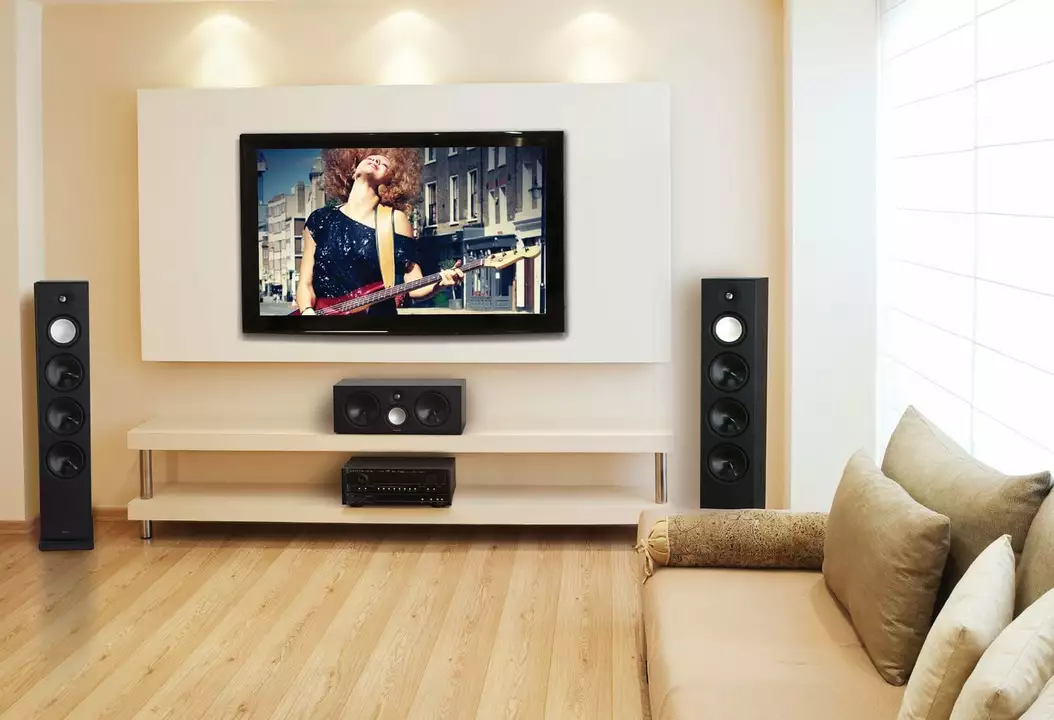
Understanding the Potential Risks
Before we dive into whether or not it's safe to keep your speaker near your TV, it's important to understand the potential risks involved in doing so. One of the primary concerns is that the magnetic fields produced by speakers can interfere with your TV's picture quality, causing distortion or even permanent damage to the screen. Additionally, placing a speaker too close to your TV can cause vibrations that may result in unwanted noise or even physical damage to the TV's internal components.
However, not all speakers pose the same level of risk to your TV. In this article, we'll discuss different types of speakers and their potential impact on your television, as well as provide tips on how to safely position your speakers to avoid any issues.
Magnetic Shielding: A Crucial Factor
Magnetic shielding is a key factor to consider when determining if it's safe to place your speaker near your TV. Some speakers are designed with built-in magnetic shielding, which reduces the strength of their magnetic fields, making it safe to place them near your television without causing any interference or damage.
However, not all speakers are magnetically shielded. If you're unsure about whether your speakers are magnetically shielded or not, it's best to consult the user manual or contact the manufacturer for more information. If your speakers are not magnetically shielded, it's best to keep them at a safe distance from your TV to avoid any potential problems.
Safe Distances for Different Types of Speakers
Depending on the type of speaker you have, the safe distance between your speaker and your TV may vary. For magnetically shielded speakers, you can usually place them as close as a few inches away from your TV without any issues. However, for unshielded speakers, the recommended safe distance is usually around three feet or more. This distance helps to minimize the risk of magnetic interference affecting your TV's screen or internal components.
Keep in mind that these are general guidelines and may not apply to every specific speaker model. If you're unsure about the safe distance for your particular speakers, it's best to consult the user manual or contact the manufacturer for more information.
Avoiding Vibrations and Noise
Another factor to consider when placing your speaker near your TV is the potential for vibrations and noise. If your speakers are placed too close to your TV, the sound vibrations can cause the TV's internal components to vibrate, which may produce unwanted noise or even damage the TV over time.
To avoid this issue, try placing your speakers on a separate surface, such as a speaker stand or a shelf, rather than directly on the same surface as your TV. This can help to reduce the transfer of vibrations from the speaker to the TV and minimize the risk of noise or damage.
Using Speaker Stands and Wall Mounts
Speaker stands and wall mounts are excellent options for keeping your speakers at a safe distance from your TV while still ensuring optimal sound quality. These accessories can help to position your speakers at the ideal height and angle for your listening area, while also preventing vibrations and magnetic interference from affecting your TV.
When shopping for speaker stands or wall mounts, be sure to choose models that are designed to support the weight and size of your specific speakers. Additionally, consider the aesthetics of your room and choose a stand or mount that complements your existing décor.
Final Thoughts on Speaker Placement
In conclusion, it is generally safe to keep your speaker near your TV, provided that you take the necessary precautions to minimize the risk of magnetic interference, vibrations, and noise. By choosing magnetically shielded speakers, maintaining a safe distance between unshielded speakers and your TV, using speaker stands or wall mounts, and positioning your speakers on separate surfaces, you can enjoy a superior audio experience without compromising the safety and performance of your television.
Remember that these guidelines may not apply to every specific speaker model or television, so always consult your user manuals or contact the manufacturer for more information on safe speaker placement for your specific situation.





